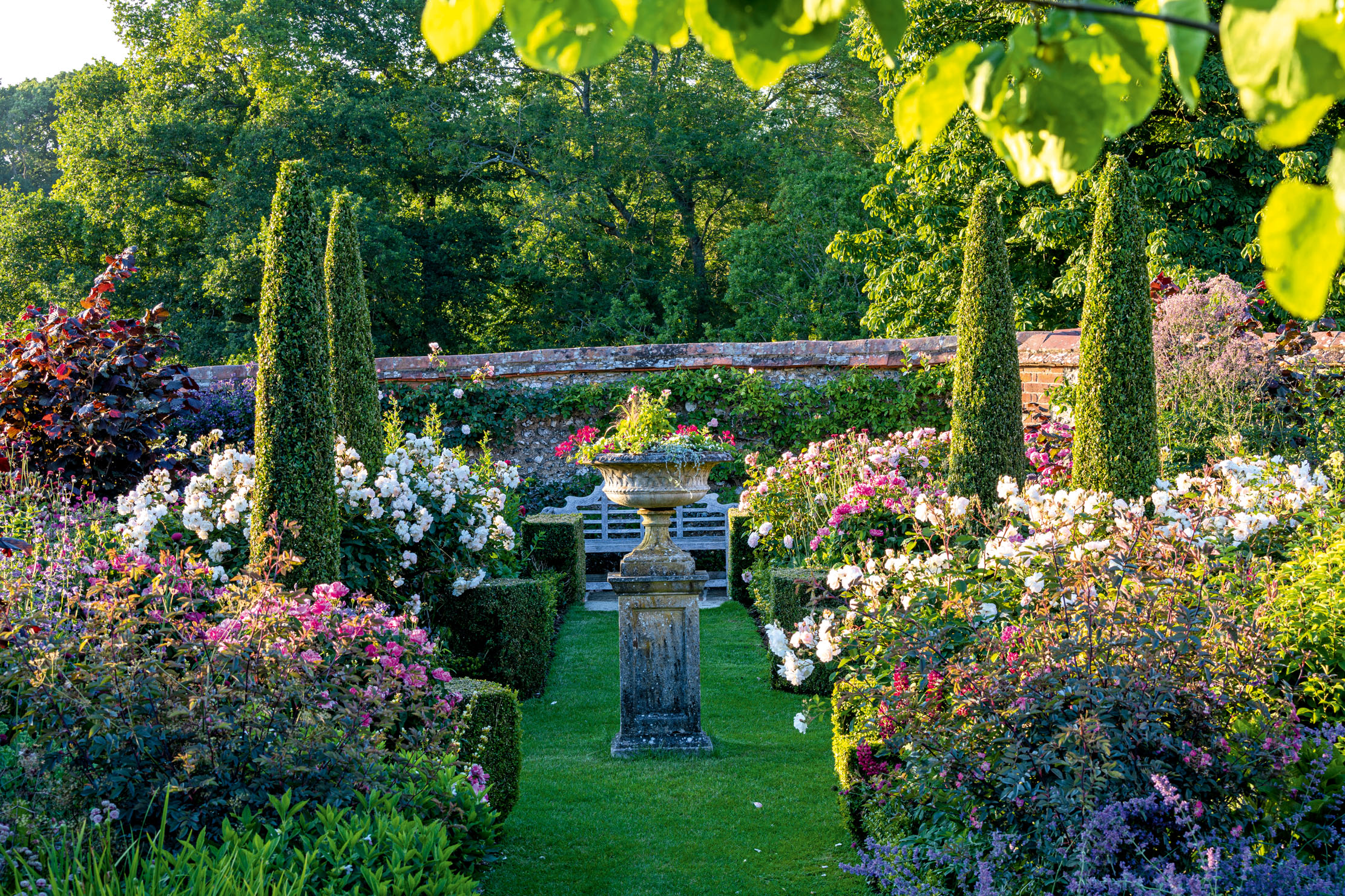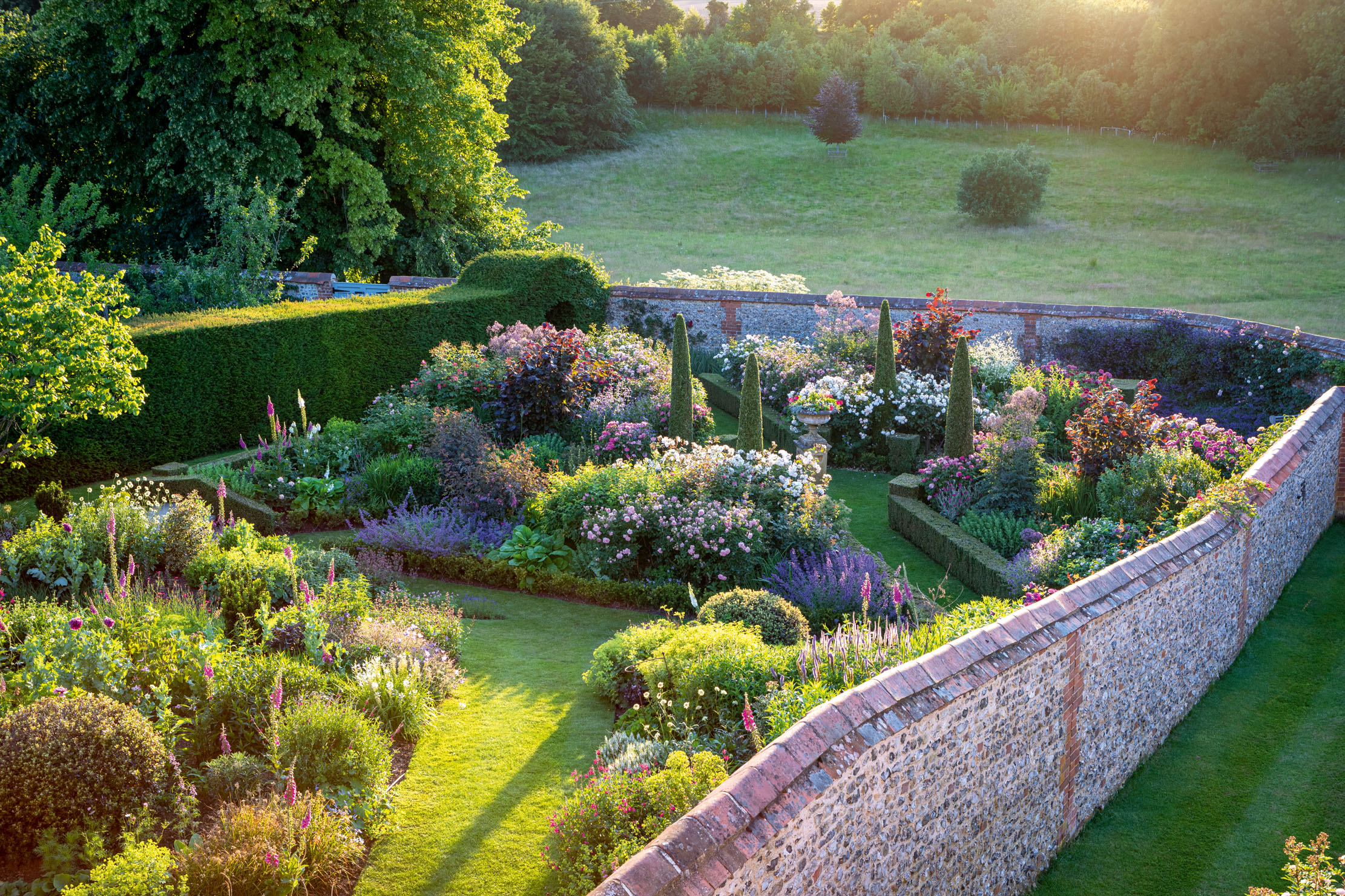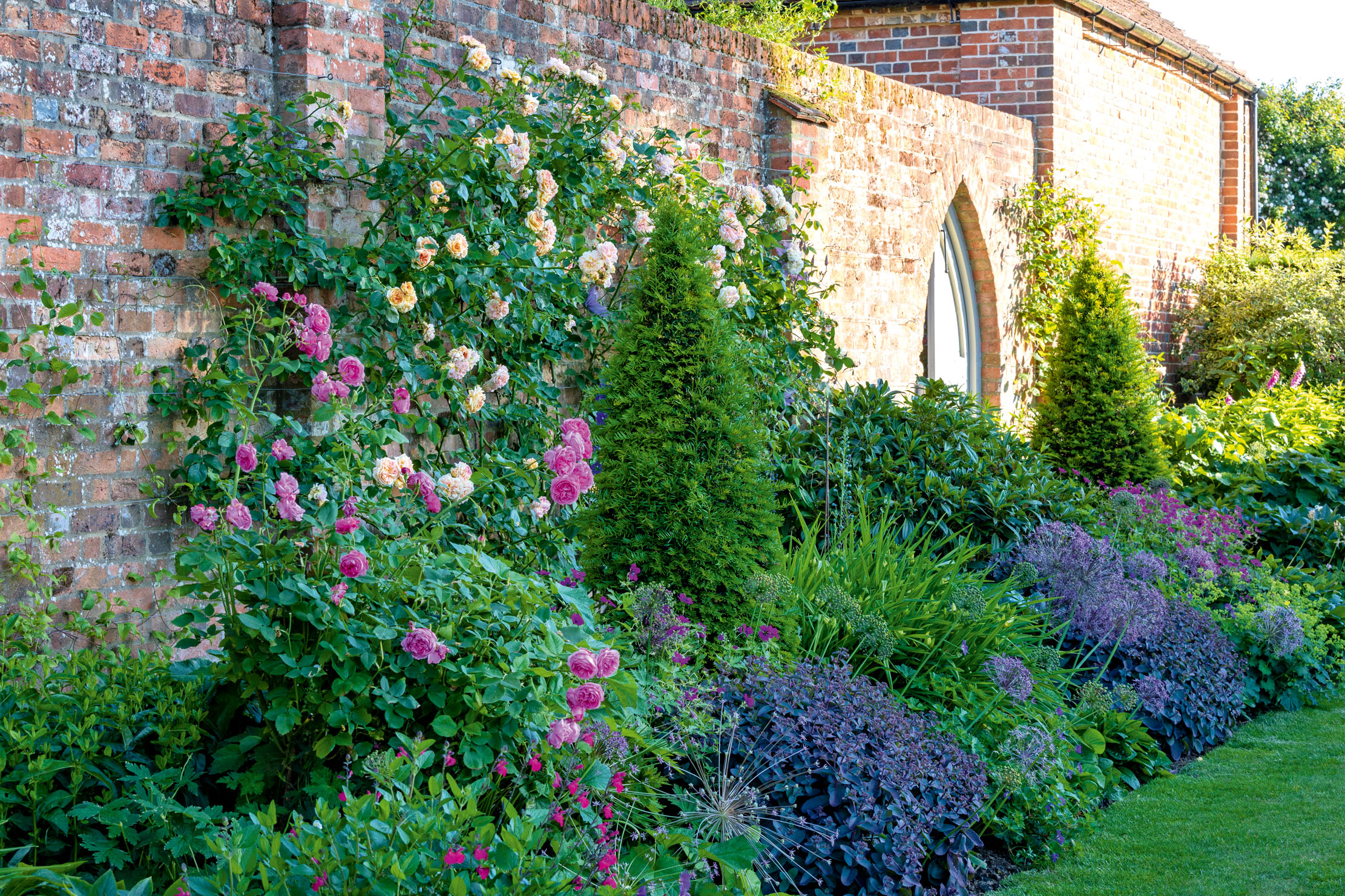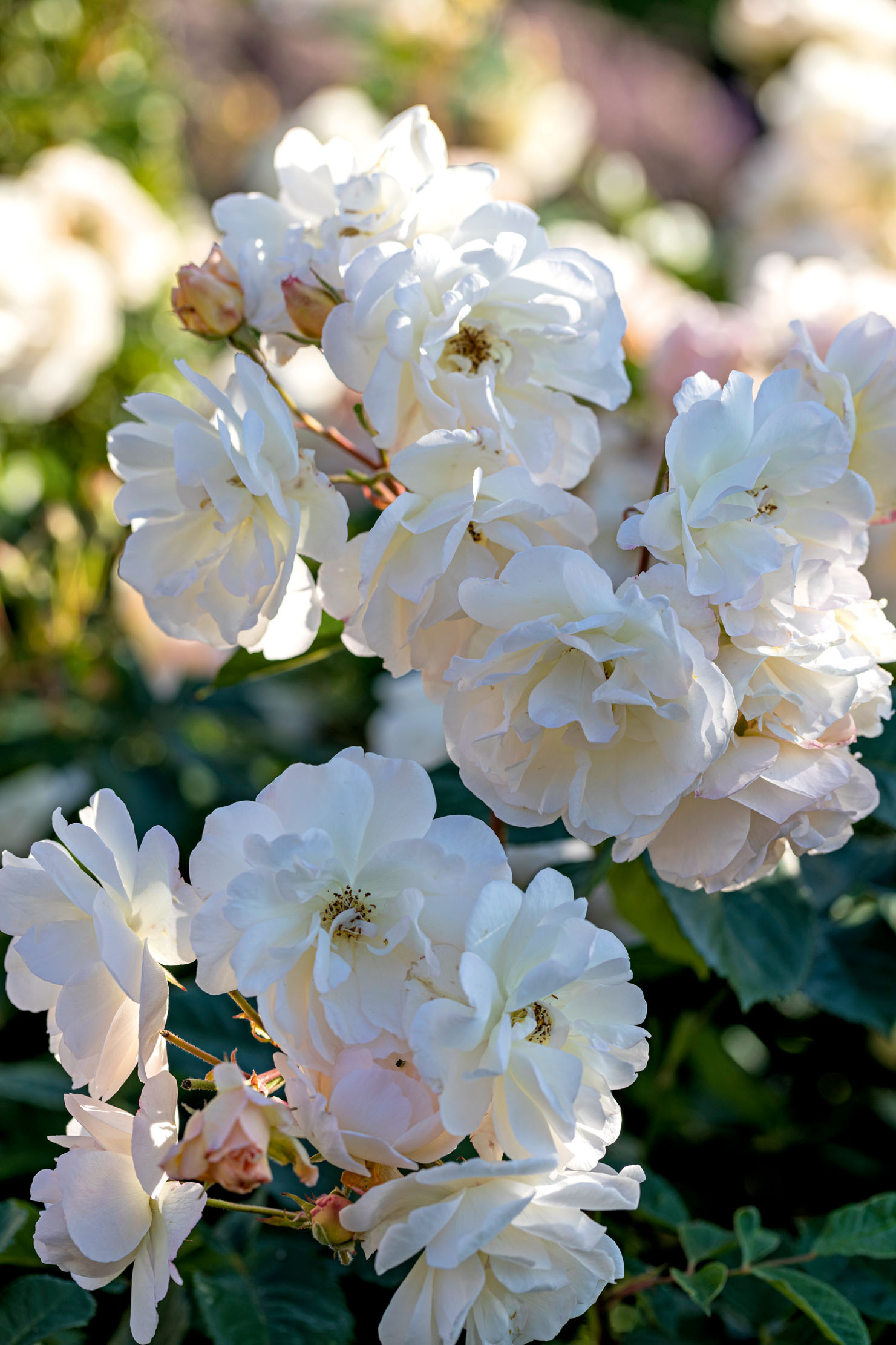The gardens at The Old Rectory, East Woodhay: The creation of an owner with a designer's eye and a true feeling for plants
Applying many of the same parameters she uses as an interior designer helped Victoria Wormsley in the renovation of the striking walled garden of The Old Rectory, East Woodhay, Hampshire, finds Tiffany Daneff. Photographs by Mark Bolton.


It takes a certain confidence to move a mini digger into an established walled garden. There are the existing plants to consider, not to mention the sense that what is there already forms part of its history. But Victoria Wormsley is a designer with an eye for what works and she could not live with the tall shrubs that blocked the view of the walled garden from the house.
The Old Rectory in East Woodhay lies on the upper slopes of a hill with a lovely open view over a small valley, with copses and meadows to the north-west. It was built on the site of an earlier and rather handsome gabled parsonage that, in 1828, was deemed beyond repair and swiftly pulled down to make way for a smart new rectory designed by the Mayfair architect Henry Harrison (about 1785–1865) in a Regency Gothic style.
It is not clear when the walled garden was built, but it slopes towards the south-west and catches the warmth of the sun within its fine, knapped-flint walls. A perfectly sited bench invites one to sit, inhaling the scent of Rosa ‘Cécile Brünner’ planted as a climber, with ‘Generous Gardener’ on the wall behind. Rosa ‘Gertrude Jekyll’ and ‘William Shakespeare’ thrive in the generous beds opposite.

This is exactly the detail one might expect from someone who works with interiors, but Mrs Wormsley, who took a course at the Chelsea Physic Garden more than 20 years ago, also has a feeling for and an understanding of plants. Her husband, David, takes care of the edibles (stepover apples and Victoria plums, rhubarb and asparagus, plus a cage full of picking fruits), leaving the decoratives to his wife.
‘When we arrived here,’ Mrs Wormsley remembers, ‘there were two narrow paths running down the sides and a mass of shrubs — including an 8ft viburnum — so one couldn’t see the topiary. The cherries were dying and needed removing and there was a walnut tree that cast too much shade, so we took that out and replaced it with a cercis.’ Bold new grass paths were laid at an angle, made wide enough for two people to walk side by side, and a shrub was placed in the centre of the resulting triangular beds.
Previously, the planting in the walled garden had been focused on June, with a predominance of roses. The thinking behind Mrs Wormsley’s new scheme has been to introduce greater variety. This is certainly better for the roses, which are much sturdier and less disease prone, and it also ensures a longer season of interest. There are plenty of dependables: Lobelia ‘Hadspen Purple’ and L. siphilitica, Penstemon ‘Purple Bedder’, salvias and melittis, with small deep blueish-mauve flowers of the semi-herbaceous Clematis ‘Arabella’ woven in between.

Where the box edging to the beds has suffered blight, it is being replaced with Ilex crenata, but the large-leaved fastigiate box columns are doing well on a regimen of mulch, manure and Toprose. Here, as elsewhere in the garden, the heavy clay soil on a bed of chalk requires plenty of mulch to keep it and its inhabitants in good heart.
Exquisite houses, the beauty of Nature, and how to get the most from your life, straight to your inbox.
The beds around the house have also been improved by being widened. They sustain year-round interest from a broad selection of shrubs using a thoughtfully limited palette of colours, with Japanese anemones, hellebores and hardy geraniums as a repeating understorey.
More recently, the approach to the house has been reconfigured, although the removal of the 10ft-high yew hedge that separated the house from the drive saw several years of procrastination before Mrs Wormsley took the plunge. The yew has been replaced by a low hedge of phillyrea that allows one to see the lawn facing the steps up to the front door. This has now been divided into quarters and standing at the crux of the new paths is a lead planter filled in summer with the magenta-pink Salvia ‘Wendy’s Wish’, bright-pink Glandularia ‘Sissinghurst’ and Plectranthus argentatus ‘Silver Shield’, which delivers a very satisfying entrance to the garden.

On the far side of the lawn, a new area of meadow leads through the old orchard shown on the 1911 Ordnance Survey (OS). Yellow rattle was introduced to keep down tougher grasses and bugle, achillea and cowslips are spreading happily. In recent years, pyramidal and common orchids have appeared.
Beyond this, reached through coppiced hazels and old rhododendrons on the lower slopes, is the Old Chalk Pit. The first edition OS map of 1879 shows a circular path around its perimeter leading down to a figure-of-eight path that suggests that a woodland walk had been made here. Surely, the snowdrops and ferns that fill the woods must date from then.

It is perhaps in the Pool Garden that Mrs Wormsley has best been able to combine her talents. First, she removed the grass from around the stone pool border, because clippings kept blowing into the water. Next, she commissioned a cabinetmaker to construct the green-oak gazebo. It is a beautiful piece of craftsmanship and, because all the timbers have been slotted into place and fixed with wooden pegs, it all moves together.
The planting in the next-door bed is her most adventurous and, although she has restricted herself to a limited palette, the use of yellows and purples makes a bold statement with the acid-yellow racemes of Moroccan broom and the deep purply-blue Hibiscus syriacus ‘Oiseau Bleu’ providing the backdrop to a mixed scheme of stately annuals and perennials.
What better invitation for lunch can there be than the table set beside the pool, in the cool shade of the gazebo, over which now climb vines and kiwi heavy with fruit?
The Old Rectory, East Woodhay, Hampshire opens for the NGS by arrangement — www.ngs.org.uk
Previously the Editor of GardenLife, Tiffany has also written and ghostwritten several books. She launched The Telegraph gardening section and was editor of IntoGardens magazine. She has chaired talks and in conversations with leading garden designers. She gardens in a wind-swept frost pocket in Northamptonshire and is learning not to mind — too much — about sharing her plot with the resident rabbits and moles.
-
 Brideshead Revisited (again): The 10 scene-stealing British country homes from film and television
Brideshead Revisited (again): The 10 scene-stealing British country homes from film and televisionWhat do an enigmatic Caped Crusader, a sopping-wet Mr Darcy and Lord Eddard Stark of Winterfell have in common? Believe it or not, British country houses.
-
 Sophia Money-Coutts: Is it ever okay to throw your dog a birthday party?
Sophia Money-Coutts: Is it ever okay to throw your dog a birthday party?Sir Lewis Hamilton did it, so why not throw a birthday party for your canine companion, Sophia Money-Coutts asks.
